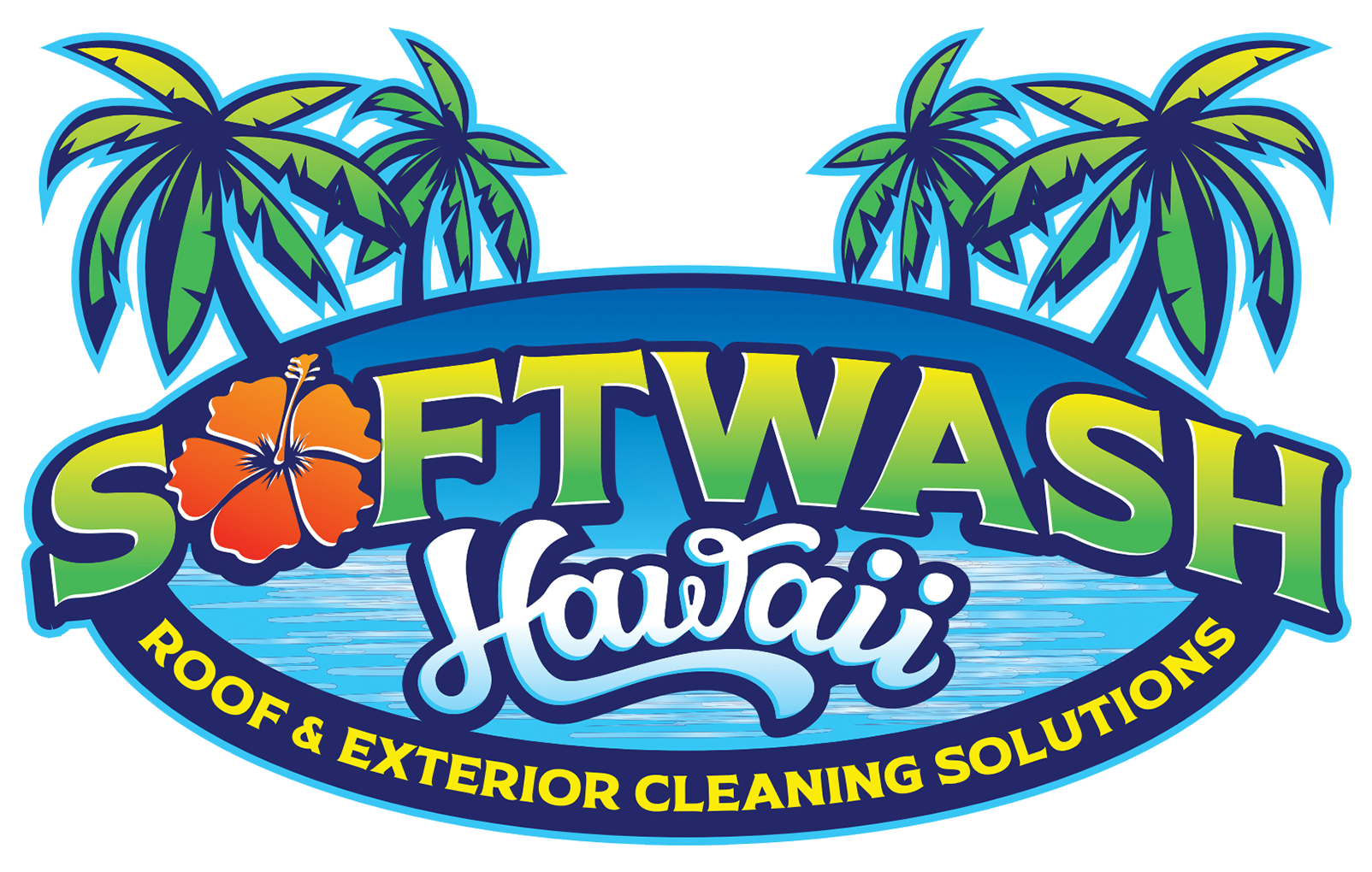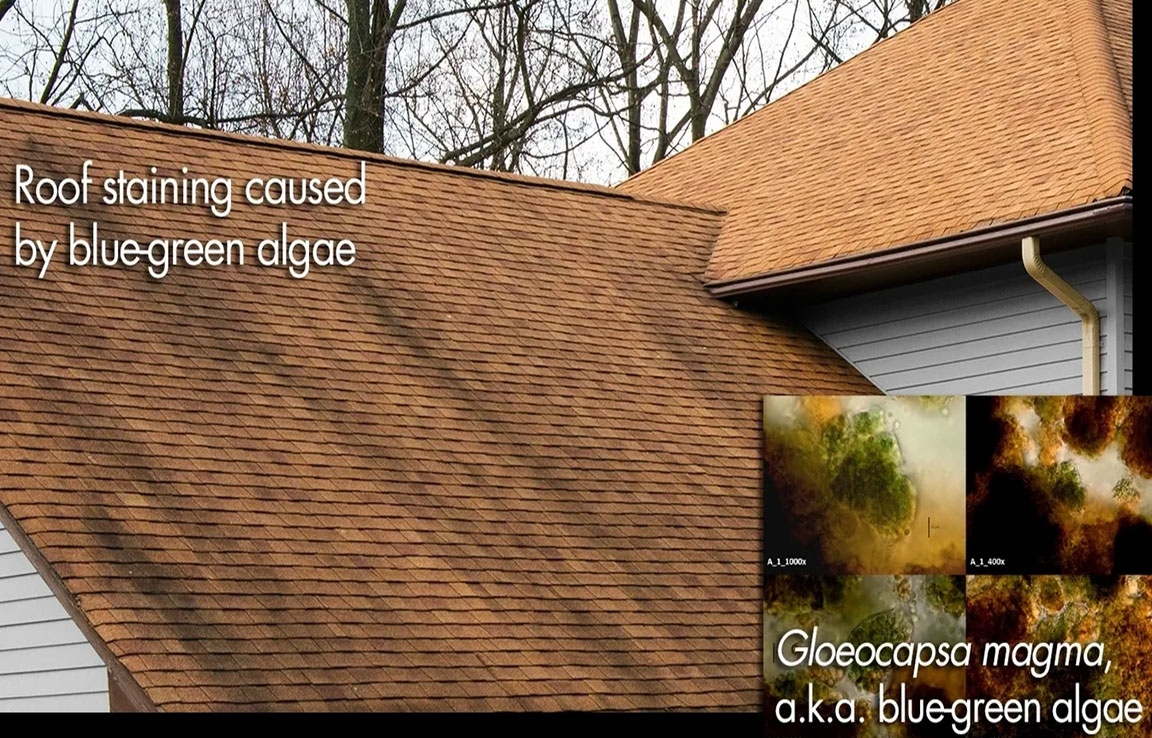Your home works hard to protect you, but without a roof, it would be to no avail.
Having a roof over your head keeps you safe from natures freezing winters, scorching summers, wind, rain, and much more.
Without a roof, you’d be susceptible to all of this and the dangers that come with it.
That’s why taking care of your roof is so important.
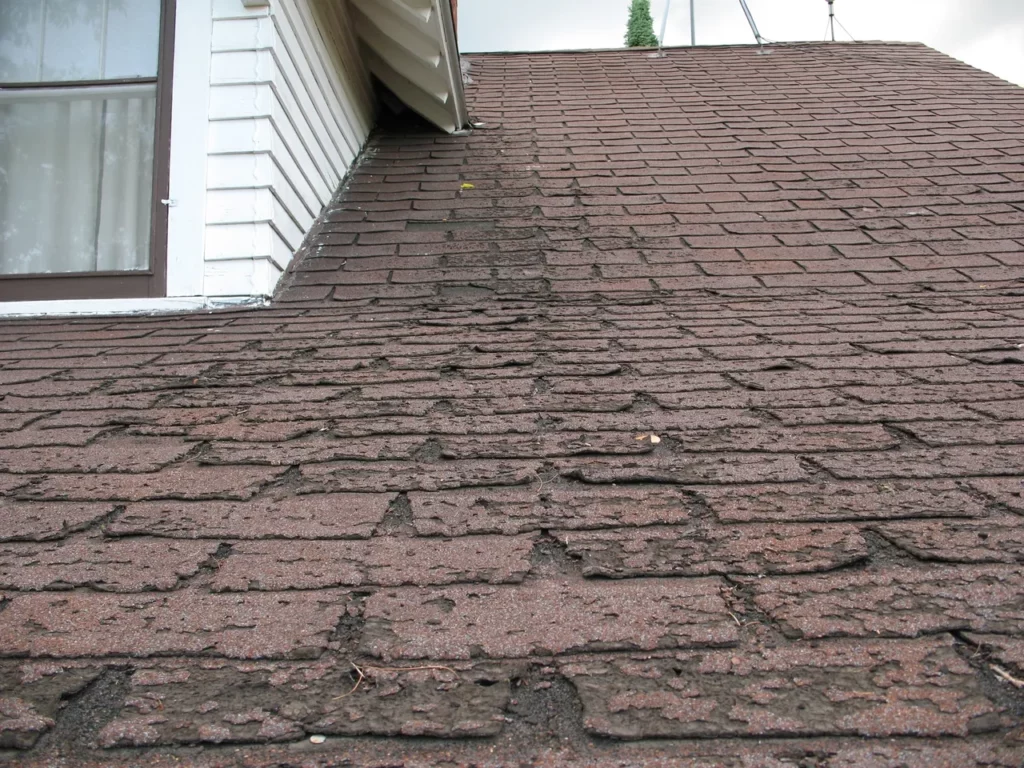
Unfortunately, damages do happen and when they do, they weaken the structural integrity of your roof.
To make sure your roof stays in good condition, you need to pay attention to your roof shingles.
When was the last time you had your roof inspected? Or when was the last time you looked up at your roof?
If your shingles look different from when they were first installed, they could be deteriorating, and this could lead to further damage and a very costly repair or replacement.
But why exactly are your shingles deteriorating?
Here are a few of the main causes of shingle roof deterioration, and what you can do to fix them.
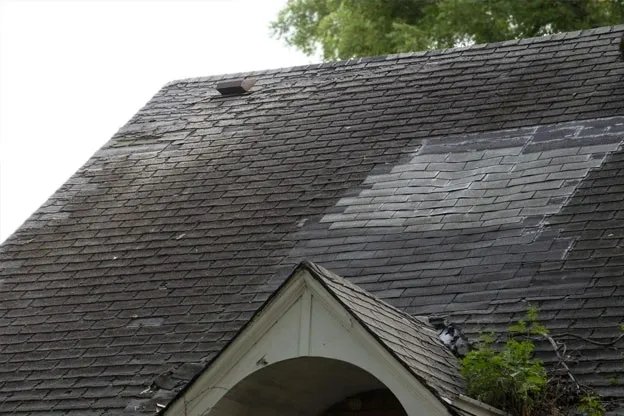
Signs of Shingle Roof Deterioration
If you’re going to be making home inspections on your own, you need to know what to look for.
Start on the inside of your attic and check for any signs of damage or light sources entering your home.
Light peeking through means there is damage and the longer you wait, the worse it will get.
Once you check the inside, you’ll need to get on your roof to inspect the outer parts of your roof, primarily your shingles and flashing.
During the inspection, look for any signs of damage.
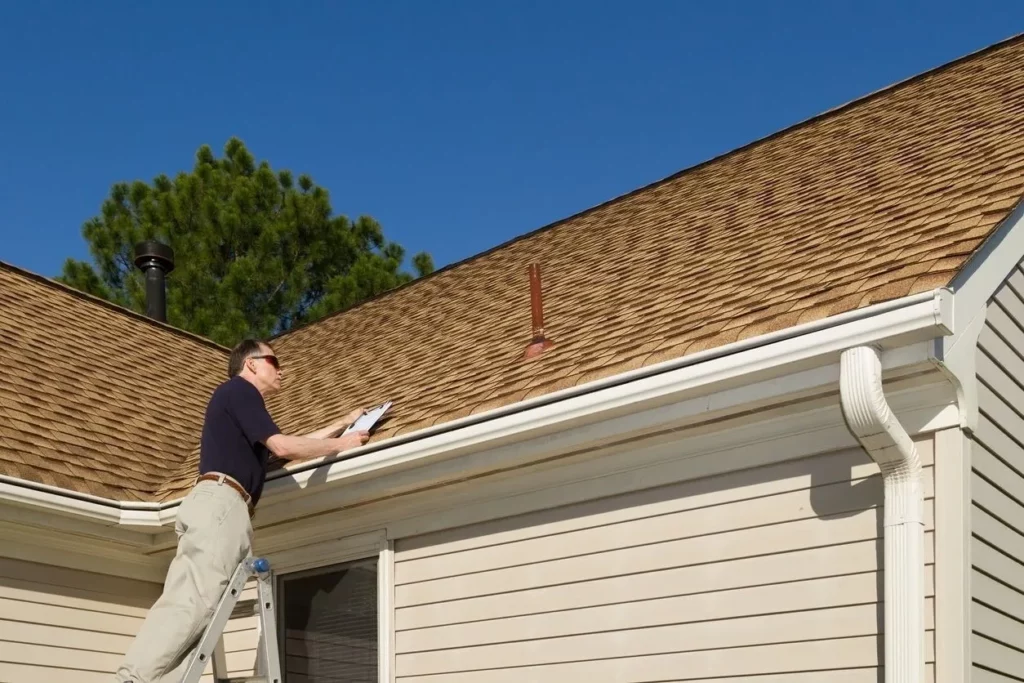
Call a professional roofing company if you notice any of the following:
1. Damaged Flashing (Nature)
Flashing lines your roof and helps prevent water from seeping into places it shouldn’t.
It’s made of metal sheeting and is installed on your roof when it’s first constructed.
Over time, due to natural wear and tear, flashing can get damaged.
Most commonly, this occurs around your chimney.
If you notice any signs of damaged flashing, it’s important to get it fixed to avoid major water damage.
2. Rotting Shingles (Decomposition)
Rotting shingles will be noticeable.
They look similar to if something that was alive started to rot.
If you notice any rotting shingles, get them fixed and have a professional inspection done to ensure that the problems aren’t deeper than the surface level.
Rotting tends to be “contagious,” so it might end up being easier to replace all of your shingles.
3. Blistering Shingles (Nature)
Shingles can take on a blistering look if they’re damaged. In this case, the surfaces look like they’re almost bubbling out.
This is from a buildup of moisture or excess gas. Blistered shingles can occur for many reasons and are worsened by extreme sun exposure.
4. Decaying Shingles (Decomposition)
As time passes, things decay—it’s a natural.
Decaying shingles are usually easy to spot and should be replaced when you notice them.
If you notice that your roof is aging poorly and you haven’t replaced it in decades, you should consider replacing the whole thing.
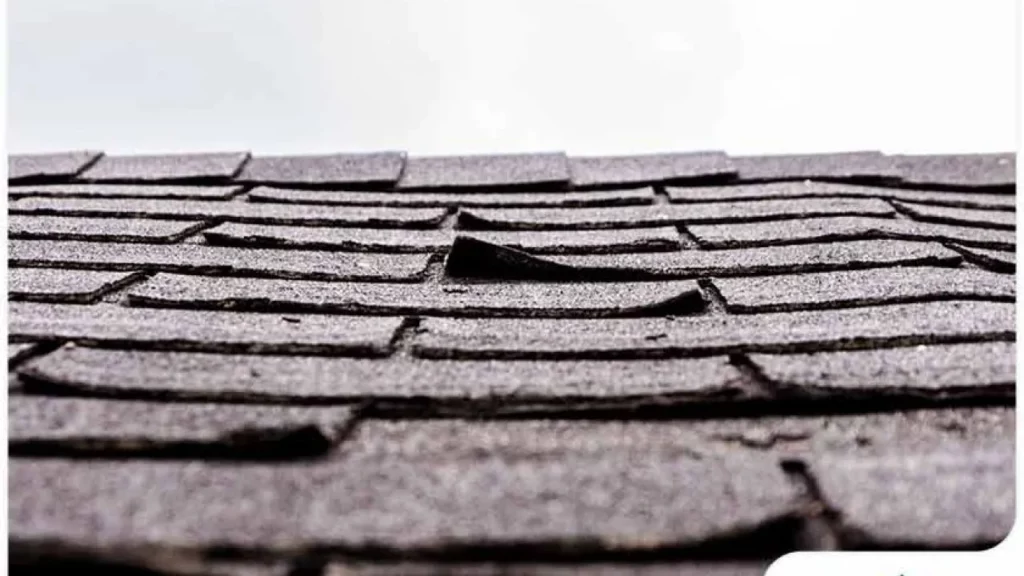
5. Curling Singles
If shingles are curling, they will look like they’re lifting up off of your roof.
This commonly happens when they’re installed improperly, subject to excessive dryness, or made from poor quality materials.
Curling shingles will expose your home, so they need to be addressed sooner rather than later.
6. Missing Shingles
Another sign of shingle roof deterioration is when there are missing shingles.
This is another obvious and easy to spot problem during an inspection.
If there aren’t any shingles protecting your roof, it will be subject to structural damage.
Causes of Shingle Roof Deterioration
Now that you know what to look for regarding signs of shingle roof deterioration, it’s important to understand the underlying causes.
Here are a few of the most common causes of shingle roof deterioration.
1. Intense Winds (Nature)
Strong winds lift up your shingles and can rip them off of your roof.
At the very least, they’ll leave them curled and susceptible to damage.
Wind creates vulnerabilities that can lead to even deeper damages, so you need to inspect your roof after heavy storms.
The edges are the most susceptible to damages from strong or intense winds, but if the storm is bad enough, your whole roof could be at risk.
There’s not much you can do about intense winds except for taking a proactive approach afterwards by having an inspection done.
2. Excessive Sunlight (Heat)
We all love sunlight. It’s calming and puts you in a good mood.
However, excessive rays of sunlight will damage your roof over time.
In fact, UV rays and relentless sunshine is one of the most common reasons for shingle damage.
The intensity of the sun will cause shingles to deteriorate faster than usual, especially if you’re in an area with strong UV light or radiation.
Try opting for a lighter shade of shingles when you need to replace your roof to combat excessive sunshine.
The lighter the color of your roof, the less heat it will retain and the slower the shingles will deteriorate.
3. Poor Attic Ventilation (Heat)
Heat from the inside of your home can also cause shingle deterioration. When your attic isn’t properly ventilation, heat gets trapped and starts to rise to the ceiling.
The longer you have poor attic ventilation, the more heat will buildup. The more built up heat that accumulates, the more likely it is for the underside of your shingles to burn.
This eventually leads to prematurely curled shingles.
To make sure you avoid these problems, check your attic ventilation.
You might need to make some updates to get the most out of your roofing system.
4. Rain, Snow, Hail, or Ice (Nature)
It’s no surprise that consistent bouts of rain, snow, hail, or ice will cause damage to your shingles.
Not only will the pressure and impact affect the shingles, the moisture will cause damage over time.
Built up moisture leads to mold and mildew along with rotting and insulation damage.
To reduce the damages from rain, snow, hail, and ice, make sure that your shingles are in the best condition possible year-round.
Take special care during the winter months as the melting and re-freezing of ice can lead to ice dams, which contribute to major structural damage.
5. Trees or Shrubbery (Assists in the Decomposition process)
Another common cause of shingle damage is excessive trees or shrubbery.
When you don’t maintain your tree branches, they’ll start to grow over the top of your roof.
The limbs brush against the shingles and during severe weather this can even cause punctures.
Throughout fall months, leaves will accumulate on your roof and cause problems for your gutter system, which then backs up water.
The backed-up water will need a place to go and will eventually seep into the shingles.
This leads to rot or structural instability.
Luckily, this is an easily preventable step.
Just make sure you do landscape regularly and trim back any low hanging trees.
Every now and then, get on a ladder and clean out your gutters to ensure that there is proper drainage.
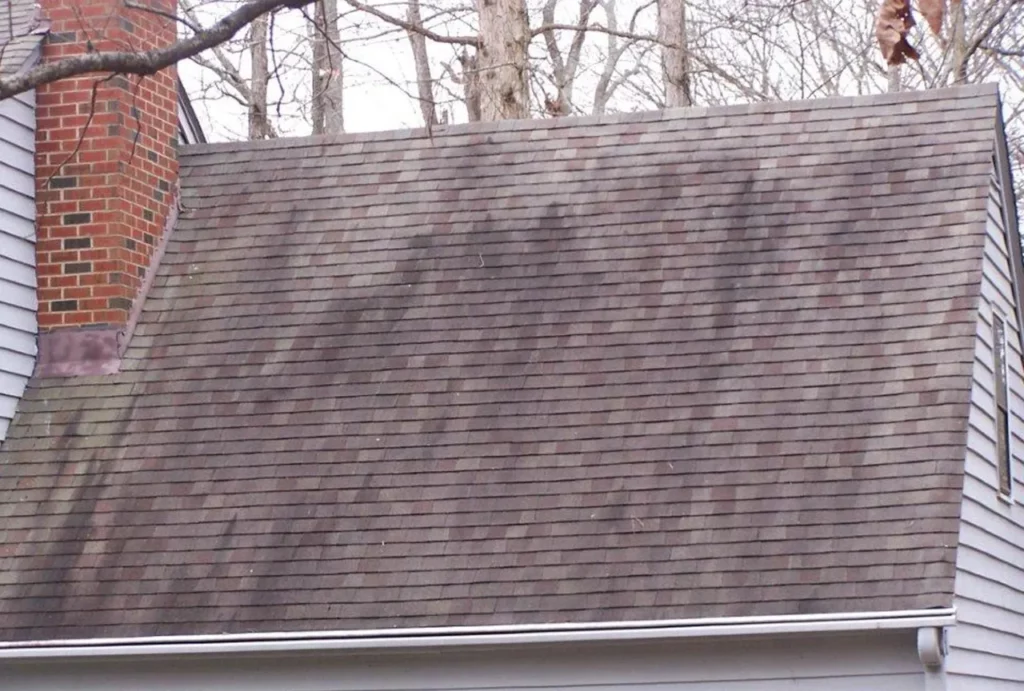
6. Mold, Mildew, Algae, Lichen & Gloeocaspa Magma (Decomposes Asphalt Shingles)
Mold, Mildew, Algae, Lichen & Gloeocaspa Magma WILL decompose your asphalt roofing shingle if you maintain your roof.
Once the bacteria have become noticeable, the stains will continue to worsen year to year.
As the bacterial colony grows, gravity pulls it downward, resulting in the smear-like stain down roofs.
Most experts within the subject area conclude the bacteria to be harmful, if left untreated, as the growth holds moisture within shingles causing premature aging, rotting, and/or granule loss.
Thus, leading to repairs and up to replacement of your roof.
When to Inspect Your Roof
Regular roof inspections are integral to the overall structural soundness of your roof.
To stay on top of regular maintenance, we recommend getting your roof inspected at least twice a year: once before the cold sets and once after.
Roof cleaning, along with a treatment maintenance program will keep your roof free of mold, mildew, algae, and lichen. Which will allow for maximum lifetime value of your roof.
Make sure to get roof inspections completed after intense storms to double check for centralized damage.
Professional roof inspections will reduce the chances of overseeing hidden damages, thus saving you money and a lot of stress.
Softwash Hawaii can assist on eliminating the mold, mildew, algae and bacteria which one of the major causes of decomposition of asphalt shingles. And also remove the supporting sources for the mold, mildew, algae and bacteria.
Contact Softwash Hawaii TODAY for questions and inquiries.
